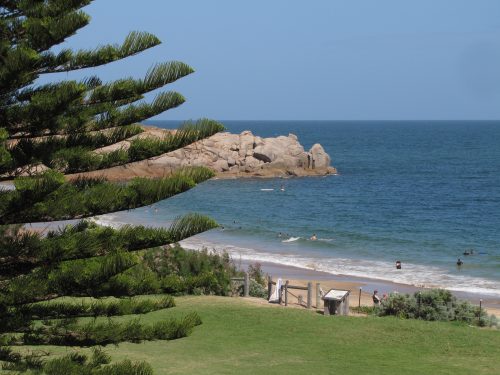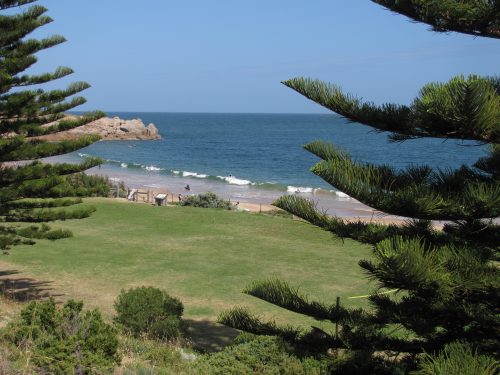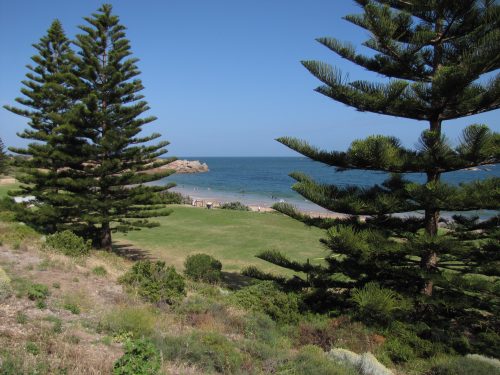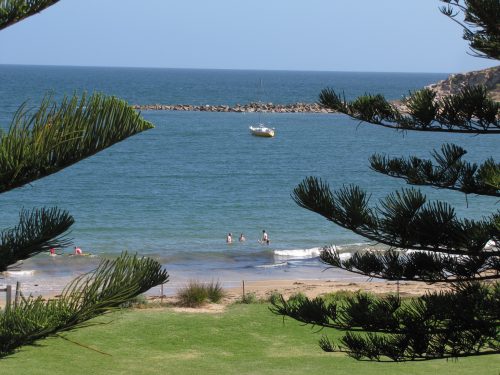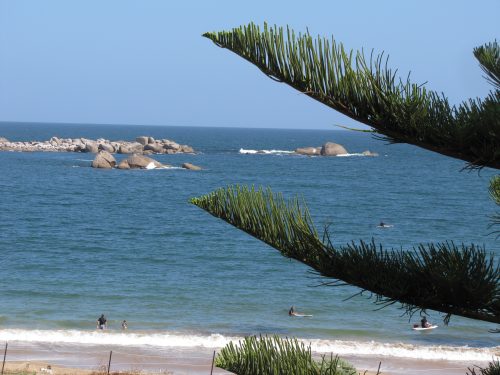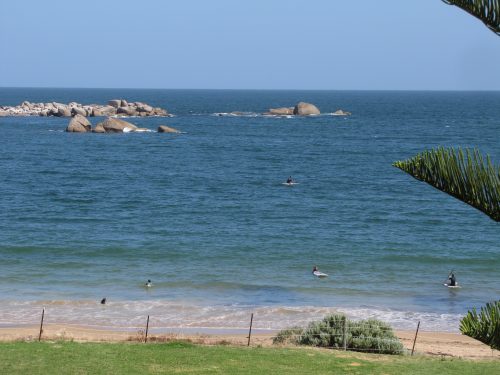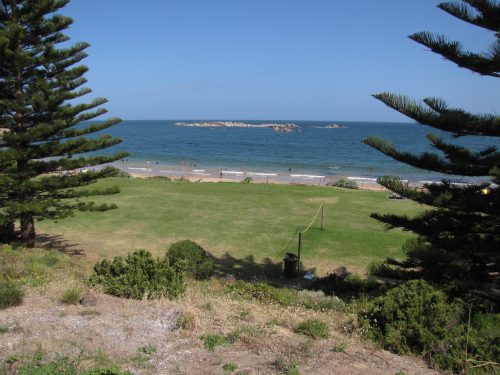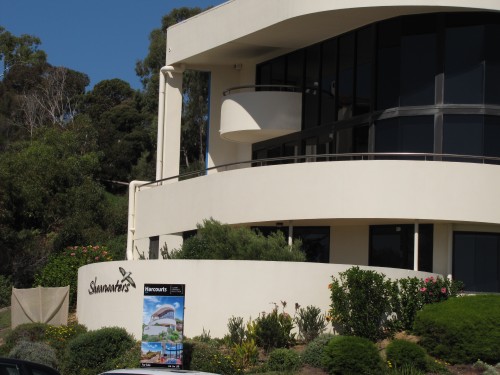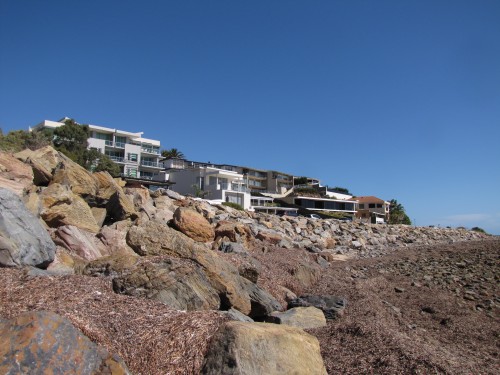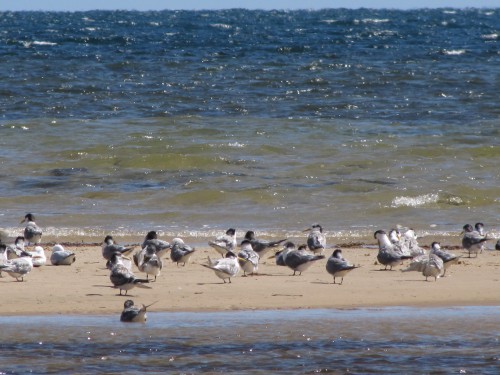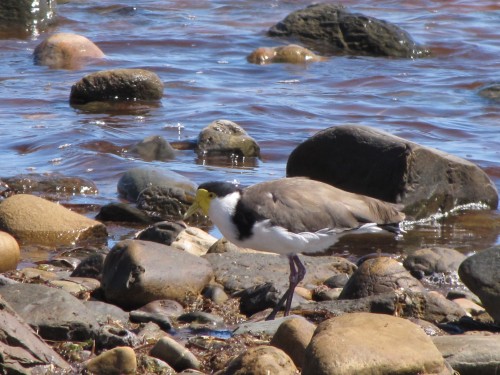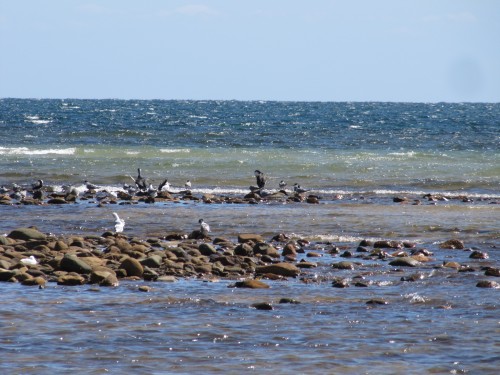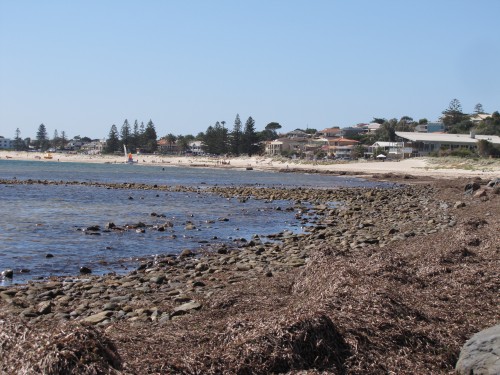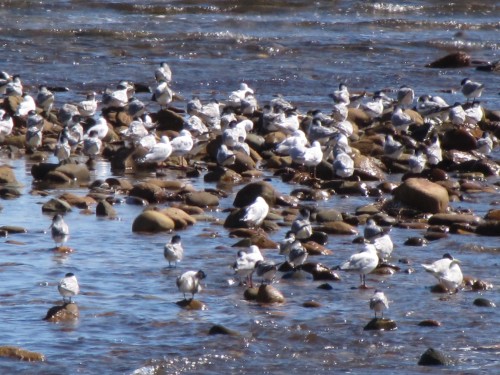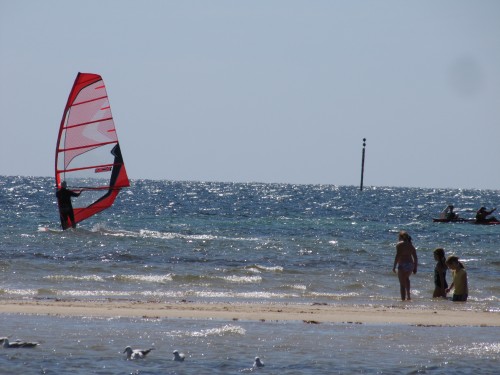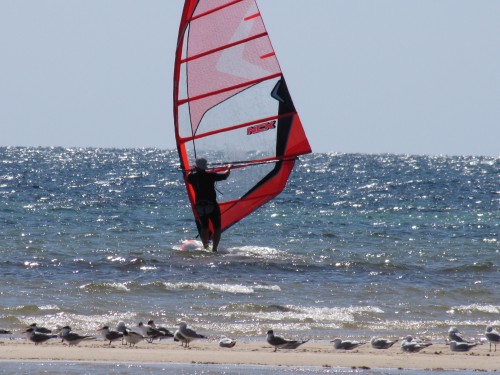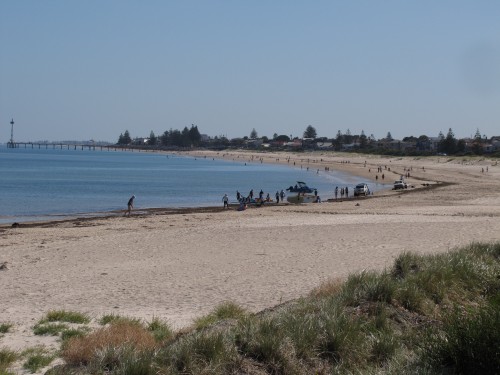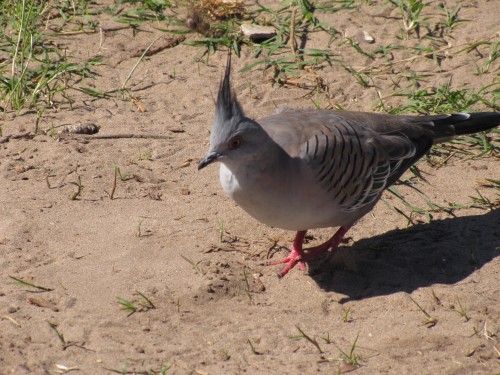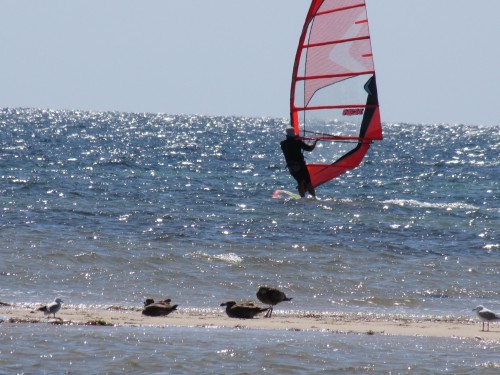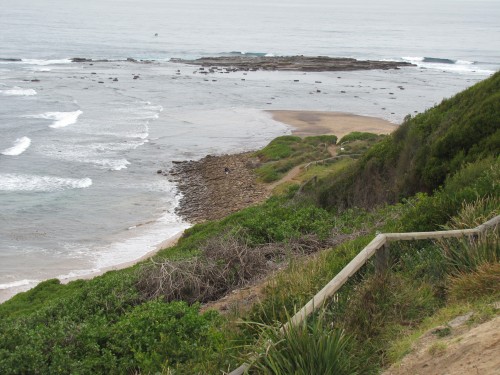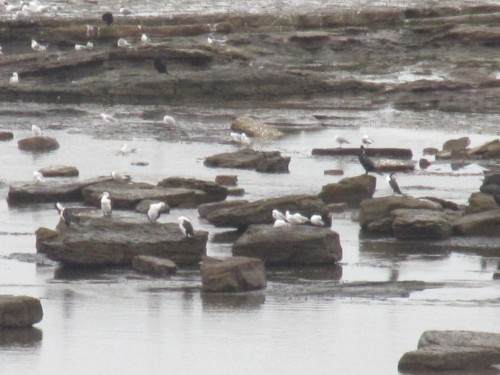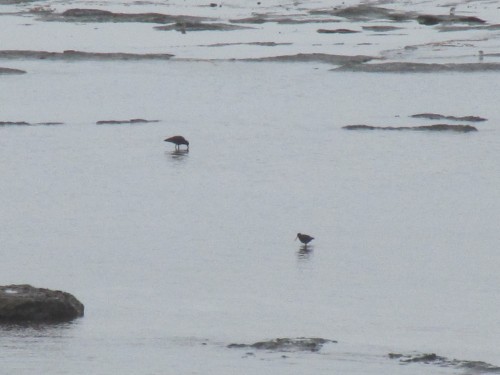Birds of Horseshoe Bay at Pt Elliot
Last week I wrote about a trip I took with my wife to celebrate our anniversary. We travelled from Murray Bridge to Victor Harbor which is just over an hour’s drive south-west from home. Along the way, we stopped at Milang, then at Goolwa, followed by an exploration of Hindmarsh Island, on to Pt Elliot and ended up having dinner at a favourite restaurant in Victor Harbor. While the day-trip was meant as a day out for relaxation, I had plenty of opportunities to do some casual birding wherever we stopped.
Pt Elliot is a lovely town of around 2000 population which swells in number during our long, hot summers. It is located on the south coast of the Fleurieu Peninsula and was established as a port in 1851. It boasts the reputation of having Australia’s first public railway line which extended from Goolwa. This railway line provided a means to carry cargo to and from the riverboat trade on the Murray River to seagoing ships. The mouth of the Murray River was considered too treacherous to navigate. The railway line is still in operation, though now it only carries tourists.
Pt Elliot has a delightful, and quite safe, little beach known as Horseshoe Bay. On our visit, it was very crowded despite the cool breeze. The local lawn bowls club is right next to the beach, and adjacent to the Flying Fish restaurant, known widely for its excellent seafood menu. The local caravan park just around the bay a little is very popular in the summer months.
The birdlife here is a mixture of land birds and coastal birds. Of the coastal birds, I was not able to identify many on this visit. On Pullen Island out in the bay, I could see hundreds of Silver Gulls and several Pacific Gulls. A small group of Little Pied Cormorants rested on the rocks while the occasional Whiskered Tern, Crested Tern or Caspian Tern flew overhead. On the islands, I am sure that there were a few terns as well, though my binoculars were not strong enough for me to be certain.
Away from the water, the Singing Honeyeater is a common bird of the coastal dunes and nearby bushes. Crested Pigeons can be seen throughout the town, often perched on rooftops or television antennae. Small flocks of Galahs and Little Corellas flew overhead. More frequently encountered are the Rainbow Lorikeets, either screeching as they fly low overhead, or noisily feeding on any flowering tree of bush in the gardens nearby. The lawns were attractive to the Australian Magpies, their keen eyes on the lookout for beetles, worms and other tasty morsels.
Further reading:
- Readers can go to further articles about some of the birds and places mentioned in the text by clicking on the links in blue.
Shearwaters apartments
Over recent posts here I have written about our recent short holiday at the Brighton Caravan Park in the southern parts of Adelaide, South Australia. While we were staying there for an extended weekend, I managed to squeeze in some birding along the coast there. On the Sunday afternoon, many of our friends who were also staying in the same park went for a walk. My wife had a little snooze in the van so I decided to take my camera and try to get some bird photos along the beach. You can see some of those photos in recent posts.
Now for something different
As I was walking back along the foreshore I came across some magnificent housing. In fact, most of the housing along this part of the coast is of a very high quality and very modern and probably with price-tags to match. The views from many of the homes and apartments along this coast are truly magnificent, plus one has the safe beach as an added bonus. One apartment building caught my attention in particular – that shown in the photo above. It had a ‘For Sale’ sign out the front but it was the name “Shearwaters” which caught my attention.
Shearwaters are seabirds and there are about 30 species of this family. Some of them are present in Australian waters and on occasion some can be seen along this stretch of coast. In fact, Australia’s most abundant seabird is the Short-tailed Shearwater which is also called a ‘Muttonbird‘ because in the early days it was caught in huge numbers as a meat bird (among other uses).
Various species of Shearwaters are seen occasionally in South Australian waters, but I can’t ever recall seeing any here. I do recall seeing the Short-tailed Shearwater in Victoria some years ago. While they aren’t seen here in large numbers, those in the Bass Strait between Victoria and Tasmania can number in the many millions and are an impressive sight when they all fly off in their migration to the northern hemisphere.
More birding at Brighton Beach
In my last post, I wrote about our weekend at Brighton Beach in the southern parts of Adelaide. During our short caravan holiday with a group of friends, we stayed in the Brighton Caravan Park – which is actually in the suburb of Kingston Park. During the weekend, most of my time was occupied chatting with my friends. We spent quite a few hours in our comfortable folding chairs, sitting at the top of the beach watching the passing parade of people walking, running, playing in the water and various water sports. Included in this constantly changing scene were various birds, mostly seabirds.
Probably the most common birds were the Silver Gulls and Crested Terns shown in the photo above. from time to time I would also see immature Pacific Gulls, as well as the occasional Little Pied Cormorant. There was an area of exposed rocky outcrops at low tide, and for much of the weekend, two Masked Lapwings spent many hours foraging for food in the seaweed and rocks. I have shown one of the birds in the photo below. I am amazed at how well camouflaged this bird is against the surrounding rocks.
On the Sunday afternoon, most of our friends went for walks along the beach. I also decided to go for a short stroll, taking photos as scenes presented themselves. The tide was slowly coming in, covering some of the rocky areas and sandbars, providing a smaller area for the roosting birds. I sat on a nearby rock for over half an hour, photographing birds, people, and boats.
Birding at Brighton Beach
A few weeks ago my wife was attending a convention in the southern parts of Adelaide in South Australia. This is an annual event and we usually go with several other couples, staying in our caravans. Previously this convention was always held in Victor Harbor on the south coast. This year the venue changed to a suburb in Adelaide, so we changed our destination for the weekend to the Brighton Caravan Park. We had never been there before and we were very pleasantly surprised. A nice clean park with new facilities and many new cabins. The van site we had included a cement slab. Our van was a mere twenty steps from the toilets and showers.
Always on these special weekends, I look forward to doing some birding. This can take place at any time during the day while the men are lounging around, eating and drinking tea or coffee, nibbling on biscuits and solving the world’s problems. Well… having an opiinion on world matters.
My plans briefly went astray from the first minute after we had pulled up at the entrance. When I entered the office to check in, the caravan park staff were in a mild state of panic. One of the employees had accidently run over an elderly lady staying in one of the park cabins. She had a cut under one eye from where she hit her face on her glasses, and she was quite shaken. As it turned out, her friend took her to a nearby hospital and I spoke to her the next day. She had recovered well from the experience, though she had a nasty looking black eye. The worker who had backed into her bought her some lovely flowers.
After this small amount of excitement, I checked in and then set up the caravan and annex ready for a few days of relaxation. On Saturday morning, the men in our group of friends sat at the edge of the park overlooking the beach. We were entertained by the local sailing club having a small regatta almost right in front of us. Most of the sailors were juniors and several boats tipped over as the sea breeze stiffened a little.
We enjoyed chatting, drinking our coffee while I did a little casual birding. There were plenty of Silver Gulls and Crested Terns flying past, along with occasional Pacific Gulls and Cormorants. Several Willie Wagtails flittered around on the lawn and nearby low bushes covering the low sand dunes. I could also hear Red Wattlebirds and Rainbow Lorikeets in nearby bushes. We were amused and entertained by the numerous Crested Pigeons feeding on the grass, chasing one another and displaying their feathers.
I will write more about this visit in my next post in a few days’ time.
Good birding.
Trevor.
Some birds of Long Reef Point NSW
A few days ago my wife and I spent a little while at Long Reef Point at Dee Why, a suburb of Sydney. This spot is known for its sea-birds, but at this time of the year only a few resident species can usually be found. Most of the waders have long since flown to warmer climes in the northern hemisphere.
The only water birds I was able to identify with my binoculars and the zoom on my camera were as follows:
Little Pied Cormorant
Little Pied Cormorant
Great Cormorant
Silver Gull
Crested Tern
Sooty Oystercatcher (see photo below)
Australian Pelican
Sharp-tailed Sandpiper
That’s not a great list by anyone’s estimation, but about the best I could do in the short time I had. Other birds seen in the vicinity, including the adjacent golf course, were:
Willie Wagtail
Common Myna (see yesterday’s post)
Variegated Fairy-wren (see post from 2 days ago)
Australian Raven
Welcome Swallow
Masked Lapwing
Spotted Turtledove
Noisy Miner
Rainbow Lorikeet
Red Wattlebird
Little Wattlebird
Grey Butcherbird
Again – not a great list but about what I expected for this time of the year, and for the weather conditions which were dull and overcast.
Next time we visit family in the summer months I must take out time from looking after the grandchildren and visit this spot again.
